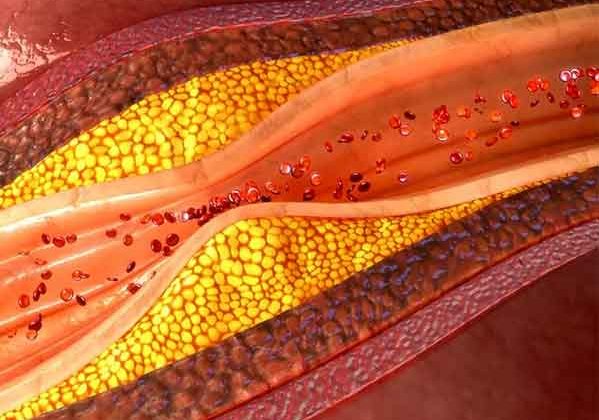The Lancet: Report provides first clinical data from initial cases of new coronavirus in China
Preliminary data from Wuhan, China indicate some similar symptoms between first 41 cases of 2019 novel coronavirus and SARS.
Another study published at the same time reports person-to-person transmission and inter-city spread of new coronavirus in six members of the same family in China, and researchers stress need for vigilant control measures.
The 2019 novel coronavirus (2019-nCoV) appears to cause similar symptoms to severe acute respiratory syndrome (SARS), and seems to be capable of spreading from person to person and between cities, according to the findings of two studies published in The Lancet.
These early but important findings involve only a small number of patients, and the authors stress the need to maximise the chances of containing 2019-nCoV infection through careful surveillance, active contact tracing, and vigorous searches for the animal hosts and transmission routes to humans.
As of January 24, 2020, 835 laboratory-confirmed 2019-nCoV infections were reported in China, with 25 fatal cases. Many of the cases have been linked to the Huanan seafood market in Wuhan, China, where freshly killed game animals were reportedly sold, although the original source of infection remains unknown.
2019-nCoV is most closely related to coronaviruses from Chinese horseshoe bats. Currently, six coronaviruses (seven including 2019-nCoV) are known to cause diseases of the respiratory tract in people, but only SARS and Middle East respiratory syndrome (MERS) have resulted in large outbreaks of fatal illness to date. Currently, there are no specific coronavirus antiviral drugs or vaccines with proven efficacy in humans.
In the first new study, researchers analysed the first 41 patients infected with laboratory-confirmed 2019-nCoV admitted to hospital in the city of Wuhan between December 16, 2019, and January 2, 2020.
The authors combined clinical records, laboratory results, and imaging findings with epidemiological data. On average, patients were middle-aged (median age 49 years), most had visited Huanan seafood market (66%, 27 patients), and most patients were men (73%, 30 patients).
Like SARS, the majority of cases affected healthy individuals, with less than a third of cases occurring in people with underlying chronic medical conditions such as diabetes (20%, 8 patients), high blood pressure (15%, 6), and cardiovascular disease (15%, 6).
Similarly, 2019-nCoV infections presented with a broad range of symptoms. All patients admitted to hospital had pneumonia and most had a fever (98%, 40 patients), cough (76%, 31), and fatigue (44%, 18). Over half of patients also experienced shortness of breath (dyspnoea; 55%, 22), whilst headache (8%, 3) and diarrhoea (3%, 1) were rare.
“Despite sharing some similar symptoms to SARS (eg, fever, dry cough, shortness of breath), there are some important differences, such as the absence of upper respiratory tract symptoms (e.g., rhinorrhoea [runny nose], sneezing, sore throat) and intestinal symptoms, such as diarrhoea which affected 20-25% of SARS patients,” explains lead author Professor Bin Cao from the China-Japan Friendship Hospital and Capital Medical University, China. [1]
Approximately one in three patients developed acute respiratory distress syndrome (29%, 12 patients) or were admitted to intensive care (32%, 13 patients), and six died. Cytokine storm occurred in critically ill patients, however, more research is needed to understand how 2019-nCoV affects the immune system, researchers say.
“It is hard to understand the mortality rate associated with this new virus currently, as we are only detecting severe cases in the initial stages of the epidemic, rather than the milder or asymptomatic cases,” explains co-author Dr Lili Ren from the Chinese Academy of Medical Sciences & Peking Union Medical College, China. [1]
Twenty eight patients (68%) have been discharged from hospital as of January 22, 2020.
The authors note several limitations of the study, including that due to the limited number of cases, assessing the risk factors for disease severity and mortality is difficult, and they call for larger studies in outpatient and community settings to confirm the full clinical spectrum of disease.
In the second paper, which is a first of its kind genetic analysis, researchers studied a family of seven people who presented to hospital with unexplained pneumonia. They identified 2019-nCoV in five members who had recently visited Wuhan, and in one other family member who did not travel with them. Only a child, who was reported by their mother to have worn a surgical mask for most of the stay in Wuhan, was not infected. Importantly, another child was infected with 2019-nCoV, but showed no clinical symptoms—suggesting that individuals may be able to spread infections in the community without knowing that they are infected.
“Our findings are consistent with person-to person transmission of this new coronavirus in hospital and family settings, and the reports of infected travellers in other countries,” says Professor Kwok-Yung Yuen from the University of Hong Kong-Shenzhen Hospital who led the research. “Because asymptomatic infection appears possible, controlling the epidemic will also rely on isolating patients, tracing and quarantining contacts as early as possible, educating the public on both food and personal hygiene, and ensuring healthcare workers comply with infection control.” [1]
The researchers studied the epidemiological, clinical, laboratory, and microbiological findings of the family.
The first patient—a 65 year old woman—developed symptoms five days after visiting a 1 year old relative with febrile pneumonia at a Wuhan hospital on December 29, 2019. After returning home to Shenzhen, she was admitted to the University of Hong Kong-Shenzhen Hospital (HKU-SZH) on January 10, 2020, along with her 66 year old husband who had also become ill (figure 1).
On January 11, four other family members were assessed at HKU-SZH—the daughter (aged 37 years) and son-in-law (aged 36 years) presented 9–10 days after symptoms first appeared on January 1-2, along with their two asymptomatic children. The seventh family member—the 63 year old mother-in-law—who had not travelled to Wuhan, but with whom several members of the family stayed with on their return, subsequently became unwell and was admitted to hospital because of persistent symptoms on January 15, 2020.
Genetic testing found that five patients were positive for the spike protein that novel coronavirus uses to enter cells [2]. Of these, the complete 2019-nCoV genome was identified from clinical samples of two patients.
None of the family visited food markets or had contact with animals during their stay in Wuhan. The authors say that the most likely explanation for the family’s infections is that the 65 year old woman acquired 2019-nCoV while visiting her young relative at the Wuhan hospital, then transmitted it to four other family members during their seven-day trip, and to the other family member after flying home to Shenzhen city in Hong Kong. However, local health authorities are still conducting further contact tracing of this family.
All six patients were hospitalised in isolation and remain stable as of January 20, 2020.
The authors stress that “vigilant control measures are warranted at this early stage of the epidemic”, but caution that their findings reflect only a snapshot of one family cluster, and how efficiently this virus is able to spread remains unknown.
“With the improved surveillance network and laboratory capability developed following the SARS pandemic, China has now been able to recognise this new outbreak within a few weeks and has made the virus genome publicly available to help control its spread”, says co-author Dr Rosana Wing-Shan Poon from the University of Hong Kong. “Learning the lessons from SARS, which started as animal-to-human transmission, all game meat trading should be better regulated to terminate this potential transmission route. Further investigations are needed to clarify the potential threat posed by this emerging virus and asymptomatic cases.” [1]
Writing in a linked Comment, authors Professor Chen Wang, president of the Chinese Academy of Medical Sciences (CAMS), George Gao, director of Chinese Center for Disease Control and Prevention (CDC), Professor Peter Horby, director of the Oxford University Clinical Research Unit in Hanoi, Vietnam, and Professor Frederick G. Hayden, University of Virginia School of Medicine, USA, say: “To improve detection efficiency, front-line clinics, apart from local centres for disease control and prevention, should be armed with validated point-of-care diagnostic kits… Education campaigns should be launched to promote precautions for travellers, including frequent hand-washing, cough etiquette, and use of personal protection equipment (eg, masks) when visiting public places. Also, the general public should be motivated to report fever and other risk factors for coronavirus infection, including travel history to affected area and close contacts with confirmed or suspected cases. Considering that substantial numbers of patients with SARS and MERS were infected in health-care settings, precautions need to be taken to prevent nosocomial spread of the virus.”
Writing in a second linked Comment, Professor David Heymann (who was not involved in the studies) from The London School of Hygiene & Tropical Medicine, UK, says: “Such rapidly shared [and open source] scientific information can be used to provide real-time guidance for epidemiologists working to contain the outbreak, clinicians managing patients, and modellers helping to understand potential future directions and the possible effectiveness of various interventions.”
An Editorial from The Lancet that was published simultaneously notes the journal’s commitment to data sharing related to public health emergencies. It notes: “Openness and sharing of data are paramount… There are enormous demands for rapid access to information about this new virus, the patients and communities affected, and the response. But equally crucial is the need to ensure those data are reliable, accurate, and independently scrutinised. As for ongoing and future health emergencies, we will be making all related Lancet content fully and freely available.”
Source: The Lancet
Full bibliographic information
“A familial cluster of pneumonia associated with the 2019 novel coronavirus indicating person-to-person transmission: a study of a family cluster”
Jasper Fuk-Woo Chan*, Shuofeng Yuan*, Kin-Hang Kok*, Kelvin Kai-Wang To*, Hin Chu*, Jin Yang, Fanfan Xing, Jieling Liu, Cyril Chik-Yan Yip, Rosana Wing-Shan Poon, Hoi-Wah Tsoi, Simon Kam-Fai Lo, Kwok-Hung Chan, Vincent Kwok-Man Poon, Wan-Mui Chan, Jonathan Daniel Ip, Jian-Piao Cai, Vincent Chi-Chung Cheng, Honglin Chen, Christopher Kim-Ming Hui, Kwok-Yung Yuen
Published OnlineJanuary 24, 2020
“Clinical features of patients infected with 2019 novel coronavirus in Wuhan, China“,
Chaolin Huang*, Yeming Wang*, Xingwang Li*, Lili Ren*, Jianping Zhao*, Yi Hu*, Li Zhang, Guohui Fan, Jiuyang Xu, Xiaoying Gu, Zhenshun Cheng, Ting Yu, Jiaan Xia, Yuan Wei, Wenjuan Wu, Xuelei Xie, Wen Yin, Hui Li, Min Liu, Yan Xiao, Hong Gao, Li Guo, Jungang Xie, Guangfa Wang, Rongmeng Jiang, Zhancheng Gao, Qi Jin, Jianwei Wang†, Bin Cao†
Published OnlineJanuary 24, 2020





